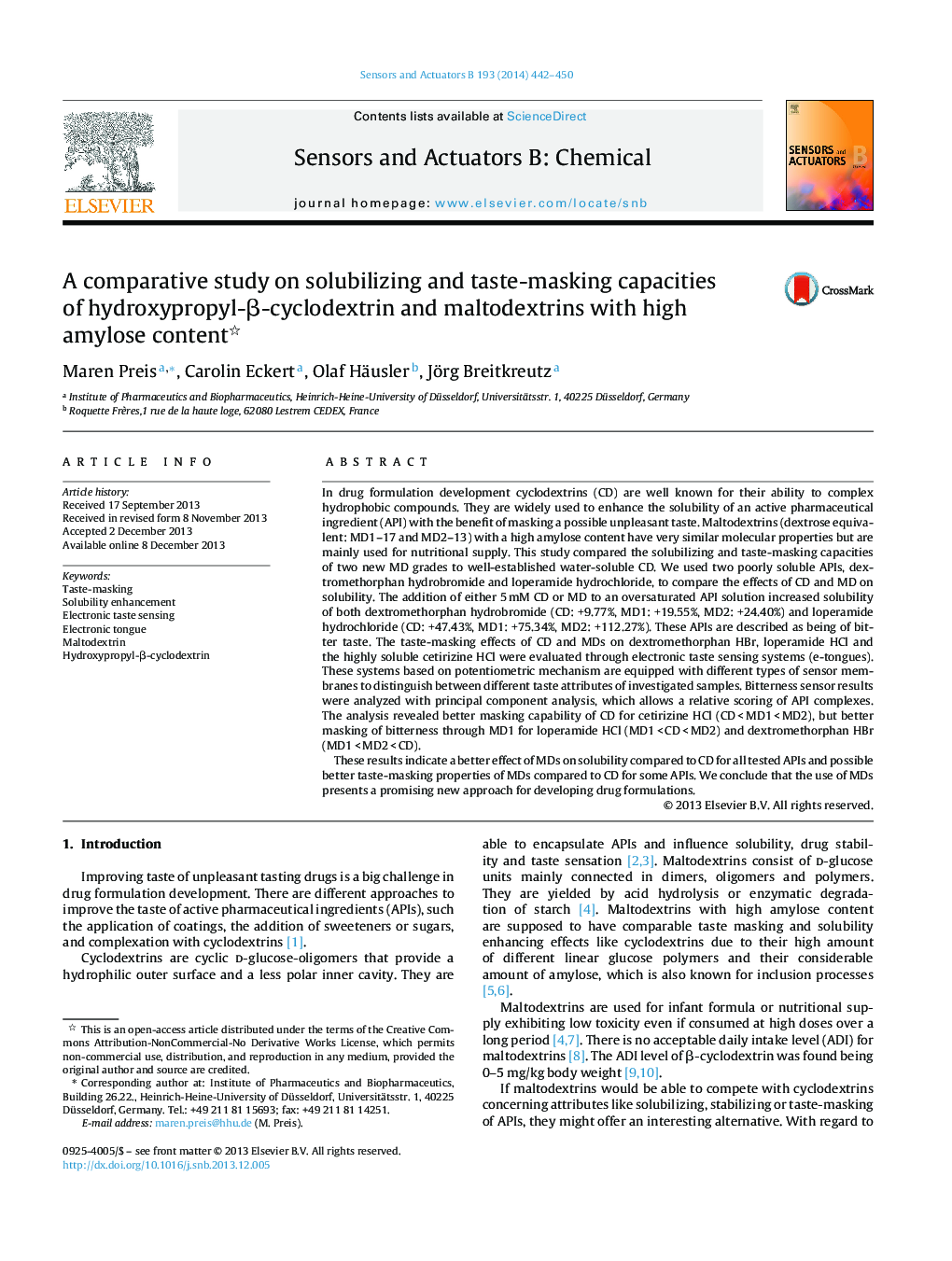| کد مقاله | کد نشریه | سال انتشار | مقاله انگلیسی | نسخه تمام متن |
|---|---|---|---|---|
| 740094 | 1462097 | 2014 | 9 صفحه PDF | دانلود رایگان |

• This study revealed solubility enhancement by maltodextrins.
• Electronic taste sensing systems (e-tongues) were capable to detect taste influencing effects on APIs by the investigated cyclodextrin and maltodextrins.
• Potentiometric taste sensors were able to distinguish between APIs, different concentrations of the taste masking agents and their mixtures.
• Maltodextrins are shown being a promising excipient for pediatric medicines.
In drug formulation development cyclodextrins (CD) are well known for their ability to complex hydrophobic compounds. They are widely used to enhance the solubility of an active pharmaceutical ingredient (API) with the benefit of masking a possible unpleasant taste. Maltodextrins (dextrose equivalent: MD1–17 and MD2–13) with a high amylose content have very similar molecular properties but are mainly used for nutritional supply. This study compared the solubilizing and taste-masking capacities of two new MD grades to well-established water-soluble CD. We used two poorly soluble APIs, dextromethorphan hydrobromide and loperamide hydrochloride, to compare the effects of CD and MD on solubility. The addition of either 5 mM CD or MD to an oversaturated API solution increased solubility of both dextromethorphan hydrobromide (CD: +9.77%, MD1: +19.55%, MD2: +24.40%) and loperamide hydrochloride (CD: +47.43%, MD1: +75.34%, MD2: +112.27%). These APIs are described as being of bitter taste. The taste-masking effects of CD and MDs on dextromethorphan HBr, loperamide HCl and the highly soluble cetirizine HCl were evaluated through electronic taste sensing systems (e-tongues). These systems based on potentiometric mechanism are equipped with different types of sensor membranes to distinguish between different taste attributes of investigated samples. Bitterness sensor results were analyzed with principal component analysis, which allows a relative scoring of API complexes. The analysis revealed better masking capability of CD for cetirizine HCl (CD < MD1 < MD2), but better masking of bitterness through MD1 for loperamide HCl (MD1 < CD < MD2) and dextromethorphan HBr (MD1 < MD2 < CD).These results indicate a better effect of MDs on solubility compared to CD for all tested APIs and possible better taste-masking properties of MDs compared to CD for some APIs. We conclude that the use of MDs presents a promising new approach for developing drug formulations.
Figure optionsDownload as PowerPoint slide
Journal: Sensors and Actuators B: Chemical - Volume 193, 31 March 2014, Pages 442–450